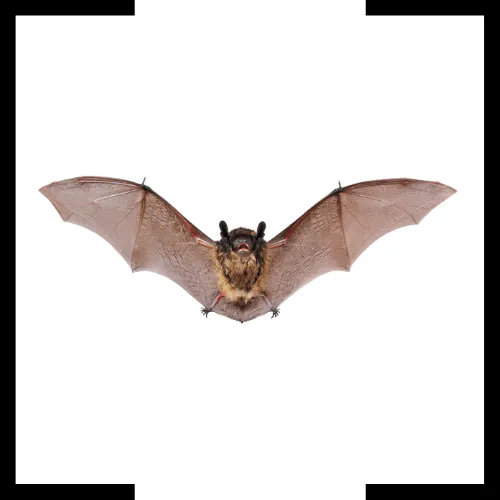Bat Removal & Exclusion
When property owners worry about pest infestations, they think of termites, ants, cockroaches, and rodents. A bat infestation is not typically the first thing that would come to mind, but the winged creatures set up shop in homes and businesses much more often than you may realize. Many are also protected or endangered species. Getting them out in a humane way that protects both the animals and people involved requires the help of a pest control expert. An attempt at a DIY solution can land you in some trouble.
They are very misunderstood creatures. Often called rodents, their faces resemble that of a rat or mouse, but they are an entirely different species: a group of mammals called Chiroptera. That name refers to their wings, which are adjusted finger bones connected by a thin membrane. That characteristic makes them the only flying mammal in the world.

Bats are not the thirsty bloodsuckers they’re made to be in the movies. In fact, the vampire bat, the only one that does feed on blood, lives in Latin America, thousands of miles away from where a Sullivan area homeowner would have to be concerned. The depiction of them roaming about at night is mostly accurate; bats are either nocturnal or crepuscular, meaning they’re most active at dusk and dawn. They can live more than 30 years.
In the United States, the bats we have are insectivores, some of which can scarf down half their body’s weight in bugs in a night. They use high-pitched sounds and sonar to find insects in complete darkness. The brown bat is the one most frequently found in our area in homes. It can eat as many as 600 mosquitoes in a single hour. Many of the bugs these winged creature targets are harmful to crops, so that we can benefit from their presence – that is, as long as they stay a decent distance away from us. The Indiana state government estimates that if those insect-eaters were to disappear, it would cost North America $3.7 billion a year.
These furry creatures seek shelter where temperatures are stable, and they’re safe from predators. It’s trees and caves in the wild, but they often sneak into buildings through small holes, air ducts, or even open doors and windows in populated areas. They can travel exceptionally far distances to reach shelter, at speeds up to 60 miles per hour.
Although these mammals are not aggressive on their own, they will lash out if they feel threatened. It’s important to note that they only require a perceived threat. You might not even notice one is there, but walk through and startle it, sparking it to swoop down and attack. Bats are hosts for some of the most dangerous zoonotic diseases, like Ebola, coronavirus, SARS, and more. Beyond that, they can be infected with rabies and other viruses. The spread of those illnesses doesn’t necessarily require a bite or scratch; however, contact with a bat or its excrement is a risk.
At Advanced Wildlife Control, we aren’t striving for mere greatness; our goal is to set the bar for complete customer satisfaction. Our services are unrivaled in the Sullivan area due to our commitment to our customers. We believe no client deserves less than that and give our all to your nuisance animal problem. Contact us today to set up an inspection with a licensed technician you can trust.
